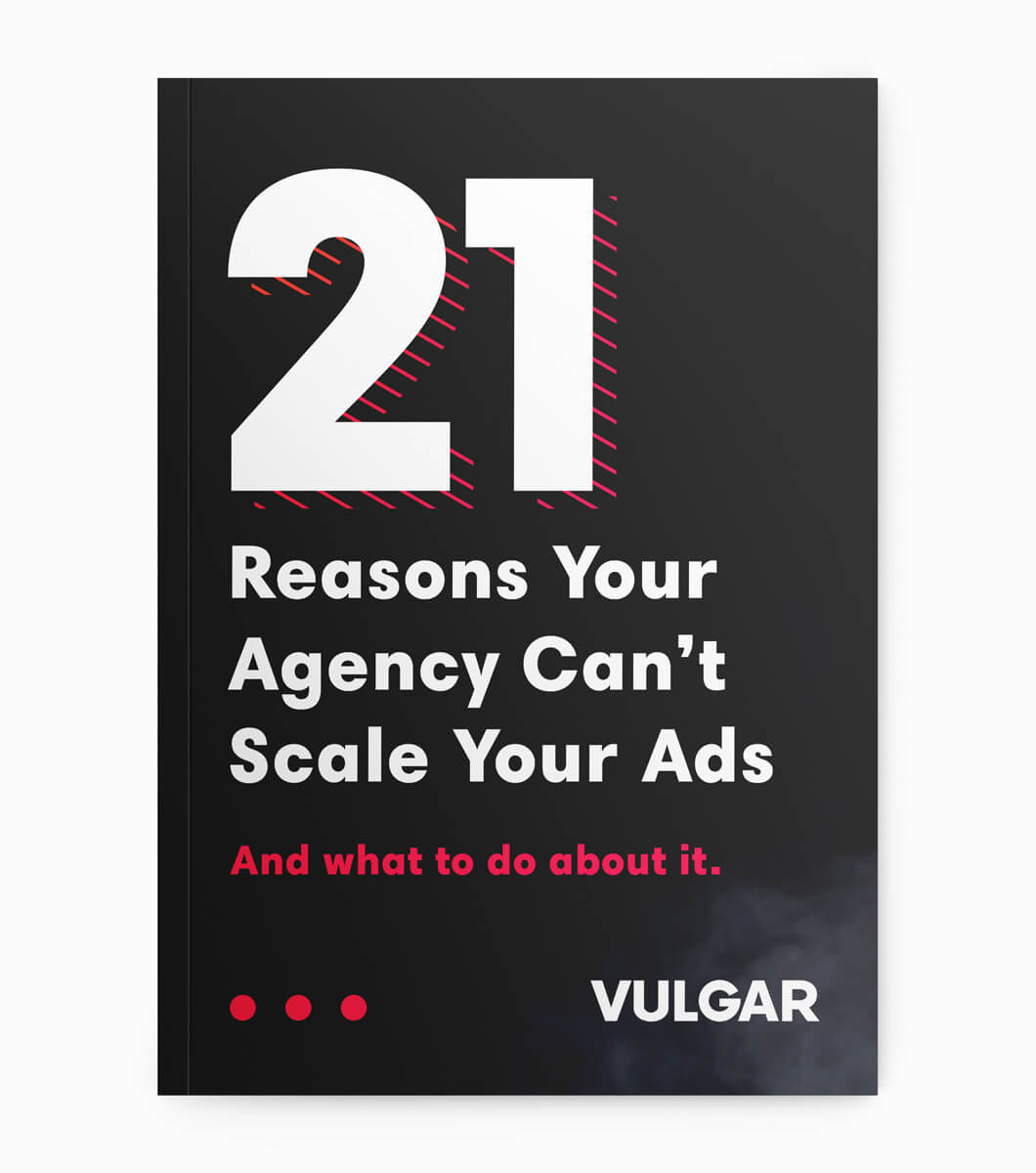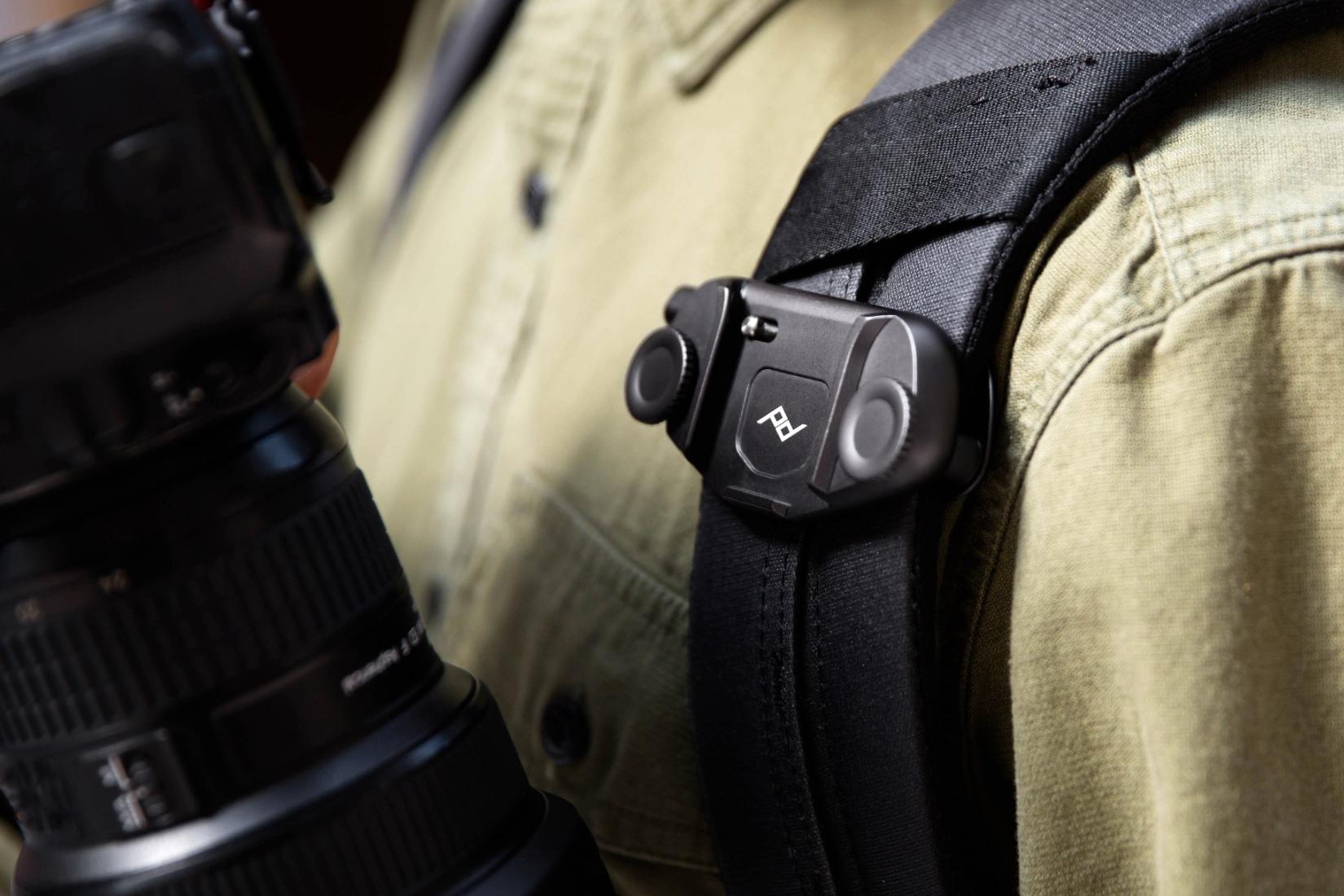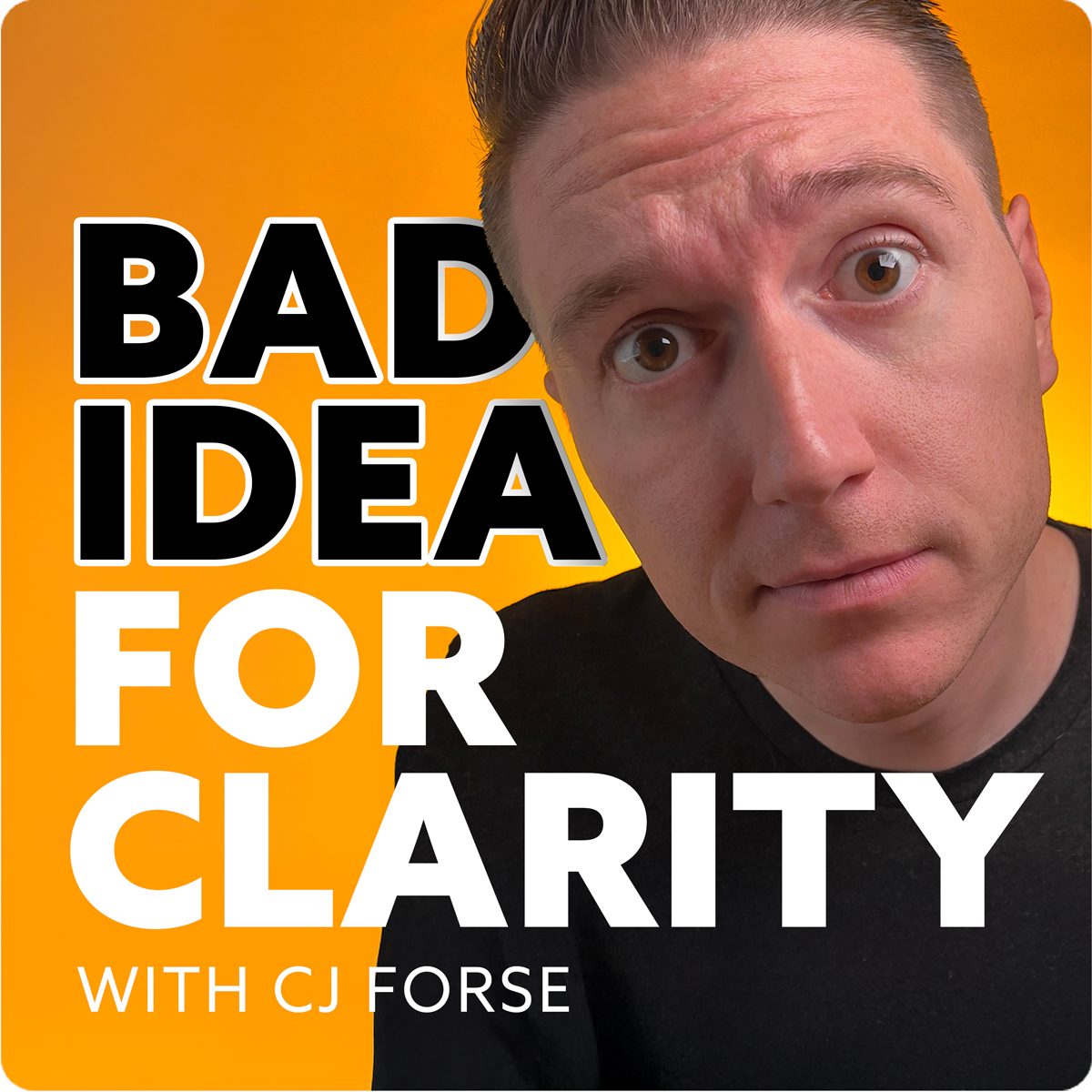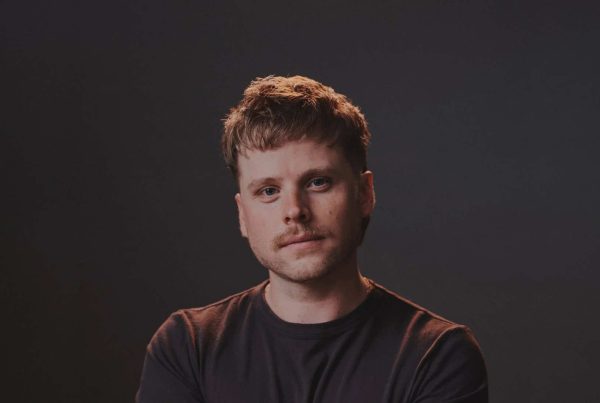This transcript is provided for your convenience by AI. Sorry for any grammatical errors. Blame the robots.
[00:00:00] welcome to The Bad Idea for Clarity Podcast. I’m your host CJ Forse, and I’m on a mission to figure out exactly what it takes to get from a few million in annual revenue to over a hundred million by talking to people who are on their way to doing it or have done it. I’m so excited for you to join me as I build the ultimate resource that I wish I had when growing my own business.
[00:00:31] Hey, thanks again for joining me on the very first episode of Bad Idea for Clarity. my mission here is really to answer that question that just kind of keeps me up at night which is how do you go from a few million dollars to over a hundred million dollars in revenue?
[00:00:47] and how do you get through each phase of business growth and all the things that go along with that. So on this podcast, you’re gonna hear me talk to a bunch of people who are either on their way to doing it. So these are either [00:01:00] CEOs, heads of marketing, they could be technologists that are helping those people.
[00:01:04] Or I also wanna talk to the people who have done it. Can reflect back to tell us about what changes they had to go through, what changes in mindset that they had to have, and what did the business need to go through in order to achieve those? because in my experience running a performance creative marketing
[00:01:23] agency called Vulgar, where we help e-commerce brands scale,
[00:01:27] I’ve seen many different reasons that brands have trouble growing or scaling their business through that gap of doom I call it, which is exactly that. the few million dollars in revenue to 50 to a hundred million because there’s so many things that need to change in the business in order to. Open up the throttle, if you will, to get the, to get the brand to go to the next level.
[00:01:51] In fact, I’m gonna share the three most common things that we see at our agency that are holding brands back and give you a few pro tips on [00:02:00] how I think you should think about it and how you might overcome those three barriers to growth. So my current position is CEO and founder of Vulgar, where we help e-commerce brands scale. That’s exactly what we do on a daily basis. We have a lot of fun doing it. We merge the power of creativity and strategy and performance marketing in order to unlock growth.
[00:02:24] Before that, I was a startup founder. It started a e-comm company out of my garage. From an idea to number one on Amazon for its category to distribution at Q vvc, target and CVS learned all the things there are to know about the startup world building a brand building a company logistics and supply chain and had to do it pretty much all myself and my co-founder.
[00:02:51] And then before that, I was one of the youngest vice presidents in the Omnicom network. So if you’re not familiar, Omnicom is a [00:03:00] giant conglomerate of ad agencies. At the time, it was close to 250 different ad agencies across the world. And of all those ad agencies and all those employees, I was one of, if not the youngest vice president in that whole network running strategies for Fortune 500 brands.
[00:03:18] So I had a lot of fun doing that put that back into the forward timing of it. that experience working with super huge brands to starting a business outta my own garage, to running my own ad agency where I’m helping brands scale. All that experience has kinda led me to this podcast where I’m just always been on this never ending journey of figuring out, what works at different stages of a business.
[00:03:44] And so, you know, this isn’t about me and sharing my expertise, but I think that. I’m well armed to a, to ask the questions that I think will help all of us get the answers that we need in order to take businesses to the next level. So that’s why I’m [00:04:00] really excited about starting this podcast and just getting to talk to people who are much smarter than I am, or have different experience than I am.
[00:04:08] So stick around for that and I hope you will subscribe. Now to the three areas or three most common pitfalls that we see, at least in our ad agency today, at the time of this recording, that are holding businesses back from scaling from that few million dollar mark to over a hundred million dollars.
[00:04:29] And the first one, which might be the most difficult to fix because it’s such a core part of a business, is that your product or the service that you sell. Doesn’t have a reason to exist. Sounds crazy, but we actually run into a lot of companies like this where it doesn’t really have a good reason to be.
[00:04:53] And I know we run into a lot of companies like this because it’s one of the questions that I ask when we’re [00:05:00] talking to prospective clients for the agency. I asked the question, Hey, why did the world need another blank? Why did you guys make this? And there’s two red flags that happen. One is if the person that I’m talking to has a really tough time answering that question, they either stumble, can’t think of an answer, or they ramble and it’s super complex.
[00:05:25] That to me is just telling me as a, as an agency founder who’s gonna be responsible for growing the business and marketing the product, it’s gonna be really tough. If the brand themselves cannot articulate the answer to that, then how is a second a third party gonna. Communicate that for them really, really tough.
[00:05:44] The other red flag is if they give me an inward facing answer, meaning that it’s self-serving, and the most common shape of that is that a brand or a business saw an opportunity in the market, created a [00:06:00] lookalike product of some sort because they want to capture market share, and they want to just make money.
[00:06:07] And that answer, you know, sucks because as a marketer or a business owner, you don’t have a good foothold to talk about why you’re different or why you’re better because you’re not, and you might be fooling yourself. So, my advice is, you know, if you have to, you gotta go back to the core of the business and you have to really live by making products or services.
[00:06:36] Solve an important problem in a novel way, and that problem doesn’t need to be revolutionary. You don’t have to create a product that’s paradigm shifting or a venture that’s gonna be a billion dollar unicorn or anything like that. It could be, for example, as simple as, the world needed a more affordable solution.
[00:06:56] The solutions out there aren’t cheap, and people can’t afford ’em and can’t buy [00:07:00] ’em. That’s a simple one. We’re just gonna beat people on cost. Not my favorite reason for existing, but sometimes that’s as, it’s as simple as that. So that’s just an example. So again, my advice is to think about the answer to the question why did the world need another blink? and the answer to that should, should help give the business a soul and a mission and a purpose. The second thing that I see very often with brands trying to scale is a lack of content, both quality and quantity.
[00:07:34] And this actually comes from a question that a client asked us this year. What is the difference between your best clients and your worst or mediocre clients?
[00:07:45] What do they do differently? That allows you guys to be more successful as a performance creative agency. And we thought about that for over a week and there was a bunch of little stuff, but the biggest one, the biggest light bulb for me was this [00:08:00] phrase that we put into this presentation
[00:08:02] and every word was thoughtfully chosen. And the thing that sets them apart is lots of high quality content created by people who are truly passionate about the products. and if I unpack that phrase for a bit, lots meaning you have to have a ton of content in order to keep up with the demands of all the.
[00:08:26] Ad platforms, the algorithms, your social media, your email, your website, all the different things that you need to feed the beast on, primarily the ad platforms. Today, in order to be successful, you need just tonnage of content. You need a lot of stuff. The next thing created by people who are truly passionate about the products.
[00:08:49] What I mean by that is whether somebody is in front of the camera or behind the camera, pressing the shutter button, they need to live, breathe, and love your products. [00:09:00] Otherwise, you will create surface level content that sucks at selling. It’ll be like, oh, let’s say you sell a backpack.
[00:09:08] It’s gonna be generic content of people walking around wearing your backpack. But what if you had people that actually knew the product and knew what made it special and knew to zoom in with a macro shot on the zippers, or knew to show the somebody running their hand over the special material that the backpack is made out of or new to tuck the straps behind the backpack in a certain way to show that feature because they’ve used that feature themselves.
[00:09:40] There’s a huge difference in working with people who know and love the products versus don’t. So my advice here can go two different ways. If you’re gonna work with an outside party to create your content, say an agency, and you don’t have in-house creatives, then you need to do everything you can to truly indoctrinate those people into your company, [00:10:00] into your brand, and get them to fall in love with the products.
[00:10:03] Make sure you’re sending them a bunch of free stuff. Send them everything you make for free. Don’t leave it to chance that they’re gonna buy your product. Get it in their hands. It’s a non-negotiable. I’m sending you this. Please try it out. Please use it.
[00:10:17] Tell them that you need them to be really in love with the products in order to do a good job. A good team will actually ask you for free product so that they can become. Huge fans of your brand, but that’s a whole other topic. The other thing that you should do is
[00:10:34] make sure that you schedule meetings between the creative folk and your product designers and engineers. Make sure that they’re getting the stories right from those people. Because oftentimes the product designers and the engineers are gonna share these little tidbits that might not be meaningful to you, but a creative person might hear ’em be like, God, that’s so interesting.
[00:10:56] I could do something with that. I could make something interesting or [00:11:00] scroll stopping or eye catching, and so you need to remove that. Chain of telephone between the people responsible for making the products and the people who are responsible for creating the cool content that’s gonna show off those products, that is huge.
[00:11:16] So what does that look like? I recommend that you have at least a quarterly meeting between the product designers or whoever’s responsible for making the products and the people who are creating the content. The third piece of advice that I have for this, if you’re gonna do this in-house, which is really smart to do
[00:11:34] Because that’s the easiest way to create a team that is truly passionate about the products is Don’t think of the team as one person. It can’t be one person. It has to be two. You have to have somebody who can be behind the camera and somebody who’s in front of the camera.
[00:11:49] That’s how you’re gonna get rapid content creation. That’s how you’re gonna keep up with the demands of the algorithm. you’re gonna get two people thinking about it, that are able to bounce ideas off of each other [00:12:00] to create even more meaningful content for your brand.
[00:12:04] The third pitfall that we often see at our agency is not balancing direct response marketing with brand building in the right way or at the right time. So let me be more specific. What I mean by that is what we most often see are brands that are too dependent on direct response advertising or marketing, where they’re trying to trade nickels for quarters.
[00:12:28] They’re trying to hack the platforms. They’re trying to A/B test their way to success and scale, and that just fatigues and falls apart. At a certain level of spend or growth for the company, you just can’t fully scale a company on pure performance marketing. You have to have brand building.
[00:12:47] You have to have air coverage for the brand so that when people happen to think of or consider a product in your category, they think of you and then you get that sale with [00:13:00] little to no interaction with an ad. You have to have that. The problem is at the early phases of a brand, you’re often not able to afford brand building,
[00:13:11] So you rely on direct response to grow the brand from zero to a couple million, and then you get addicted to that. And then what can happen is as the brand grows, the reliance on that is so deep within the company. That if an algorithm changes or the economy takes a turn or just something goes awry and you’re not able to spend that marketing dollar, well then your performance of your entire company goes in the toilet.
[00:13:38] And this is how businesses go out of business when there’s like an iOS change or something like that. So you have to have a balance. But the moral of the story is, at least my advice, is that we like to take a brand response approach.
[00:13:55] And what that means is every ad that we make, even though it might be, a conversion [00:14:00] centric ad, something at the bottom of the funnel that’s really intended to drive return on ad spend, or really get conversion, even those ads were thinking about, how can we make this in a way that if I saw in my feed, it would make me know, like, or trust the brand.
[00:14:19] Meaning like, oh, maybe I’d be compelled to hit that Tap the heart button to like the post. Maybe I’d be compelled to share it with a friend. Maybe I’d be compelled to save it. Maybe I’d be. Compelled to just feel something, feel emotion. A lot of ads , especially the direct response bottom of funnel ads, are trying so much to appeal to the rational side of the brain, the logical side of the brain, that they totally miss on getting somebody to feel an emotion, which we know from psychology and marketing expertise, that to get somebody.
[00:14:55] To remember you, or even to make a decision, [00:15:00] people must access the emotional centers of their brain. So if we’re able to. Accelerate that lighting up of the brain by having the ad make them feel something, then results across the board can be better and you can build your brand while doing direct response advertising and marketing too.
[00:15:18] So a lot more on that topic as well. But to put a fine point on it, the advice there is invest in good creative.
[00:15:28] Make ads that are designed to get people to feel something, even if you’re just trying to get them to convert.
[00:15:34] So that’s it for me on the very first episode of Bad Idea for Clarity. Thanks for joining me. If you’ve listened this far, please subscribe. The plan for future episodes is more interviews, pretty much all interviews, because I’m personally trying to answer the question of how do you grow to a hundred million dollars?
[00:15:51] so I’m excited for you to join me as I learn and we learn together from all the rad people out there and all the cool conversations that we’re about to [00:16:00] have.
How a clever clip, some friends with cameras, and a boatload of integrity built a bootstrapped behemoth.
Let’s get one thing straight: Peak Design didn’t just grow a brand. They built a movement—for people obsessed with good gear, elegant solutions, and not being sold to like they’re idiots.
In this episode of Bad Idea for Clarity, Lawrence Lander and Adam Saraceno from Peak Design unpack how they took a single product—the Capture Clip—and turned it into a $100M/year business. Spoiler: it didn’t involve VC money, drop shipping, or a cult of personality. It was Kickstarter, killer content, and a no-BS brand voice the whole way through.
If you’re trying to scale a consumer brand to $100M, there’s a lot to steal from their playbook.
The $100M Growth Journey in Four Chapters
Chapter 1 – Capture Clip and the Kickstarter Spark
- The origin: Pete Dering quits his job, builds a camera clip, and crushes Kickstarter.
- No ad budget, no website skills—just a great product and a humble pitch.
- Kickstarter gave Peak Design a tribe: photography-obsessed early adopters hungry for smart gear.
- They didn’t just use Kickstarter—they redefined product launches around it (14 campaigns and counting).
Takeaway: Validate early, launch scrappy, and treat your first customers like gold.
Chapter 2 – Building the Brand (Before It Was Cool)
- They didn’t “build a brand.” They just acted like real people.
- DIY content: early product shoots done by employees who were amateur photographers themselves.
- Peak’s secret sauce? Clever products backed by equally clever storytelling—especially on video.
Takeaway: Don’t fake the polish. Tell the truth, be funny, and make the customer the hero.
Chapter 3 – Going Big With Bags (and a Bigger Team)
- The Everyday Messenger launch was a turning point: the brand’s first sexy, aspirational product.
- Enter Lawrence Lander (yes, with an masters in fine art), who helped elevate packaging, design, and brand storytelling.
- This era saw Peak go from “cool clip company” to full-fledged brand.
Pro Tip: When hiring, look for creative range. Packaging is marketing. So is product design.
Chapter 4 – Mass Market Dreams, Humbling Lessons
- Mobile accessories = massive TAM. Execution? Trickier than it looked.
- COVID wrecked timelines. The product suite launched late, to tepid Kickstarter results.
- Lesson: you can’t just “build it” and expect the masses to come. You need retail strategy, distribution muscle, and marketing sophistication.
Takeaway: Complexity scales fast. Respect the ops. Respect the creative. Respect the timing.
The Peak Design Marketing Playbook (Stolen, Not Secret)
1. Video Is the Message
- Kickstarter’s format made them master problem-solution storytelling.
- Every campaign starts with the script—not the ads, not the brief.
- Those videos become the backbone for everything: landing pages, paid media, social.
Actionable Tip: Make a “Kickstarter-style” video for every major product launch—even if you’re not crowdfunding.
2. Content Creation Starts in the Job Description
- Many early hires were already creatives: designers, photographers, tinkerers.
- Advice to brands? Bake content creation into hiring. “Photographer” can be a sub-bullet in your eComm manager role.
3. Ads That Don’t Suck (Eventually)
- Early paid ads were… bad. Clickbaity. Off-brand. Internally embarrassing.
- Things changed when they found an agency that could “go toe-to-toe creatively.” (That’s us!)
- Now, ads actually reflect the product quality—and the brand’s voice.
4. Partner Like You Hire
- Peak treats agency partners like internal hires: with care, accountability, and human decency.
- Managing vendors is work—and Peak puts in the time.
Conclusion: The Real Secret? Product Integrity + Brand Sincerity
Peak Design’s growth isn’t magic—it’s methodical. They make gear for themselves, talk like humans, and obsess over every detail. They launch with content, not coupons. They hire funny people. And they never outsource the soul of their business.
If you’re building a $100M brand, start with this: build something people actually want, and talk to them like they’re in on the joke.
Listen to the full conversation with Lawrence and Adam from Peak Design on the Bad Idea for Clarity podcast here:

What’s holding you back from scaling?
- The 21 most common killers of scale
- 50 pages of tips and ideas to overcome barriers
- Unlock your brand’s potential to scale






